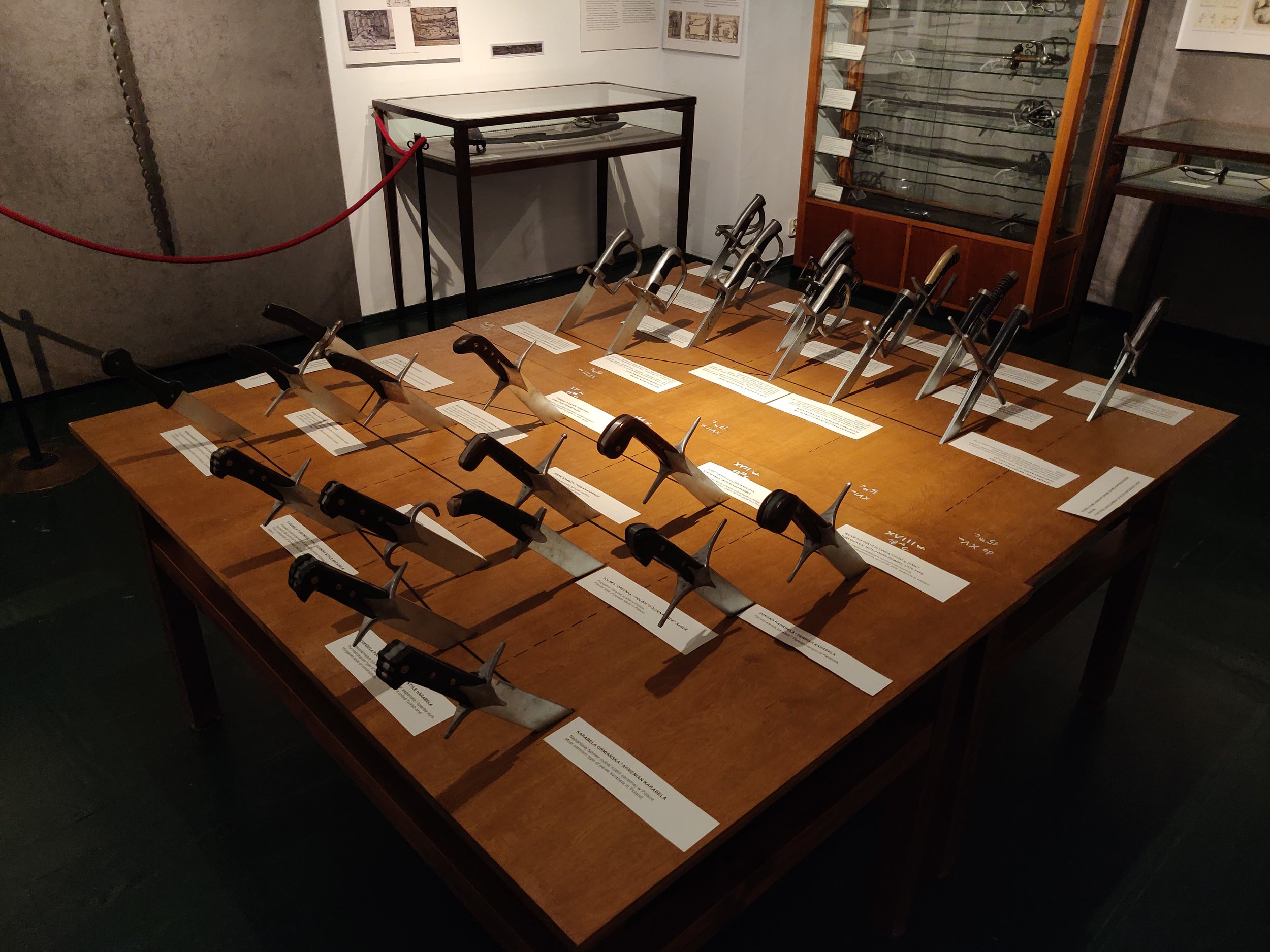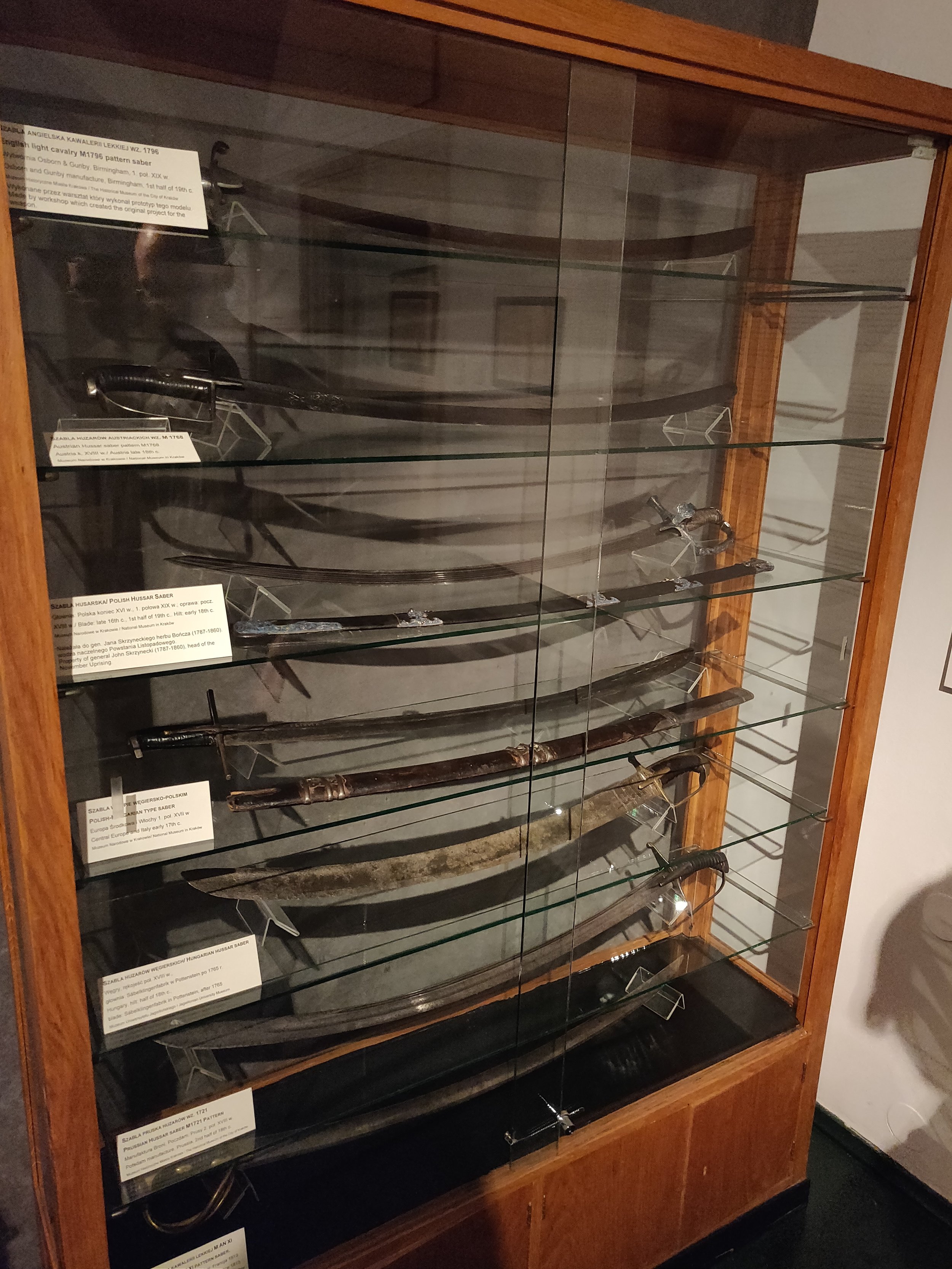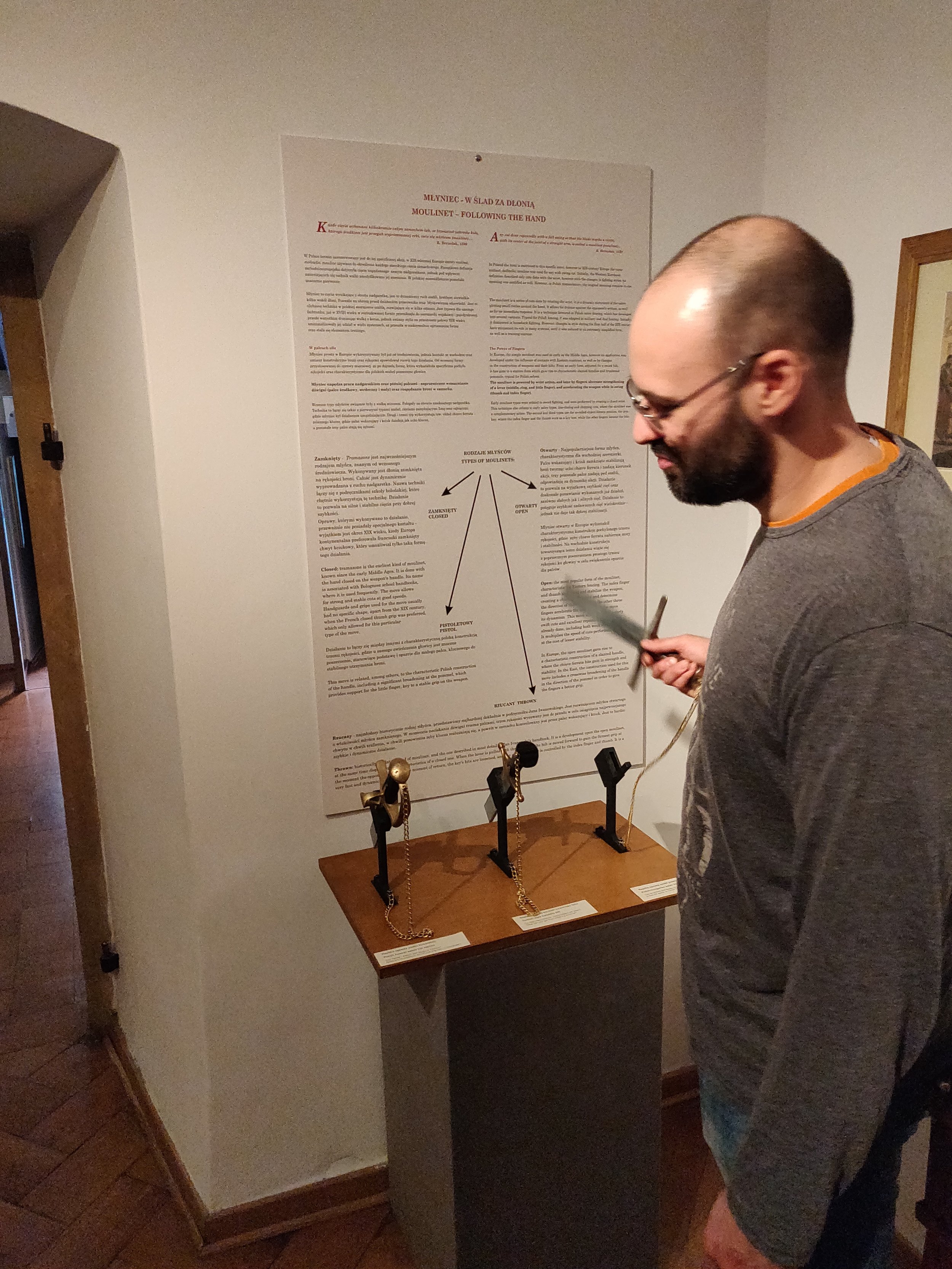Continuing to follow-up exhibitions related to historical European martial arts (see my published article about it here), I’ve been pleased to visit this exhibition in Poland. This dense, interactive and surprising display does not focus on a specific (obscure?) martial discipline, but encompasses a (perhaps too?) large cultural history of pan-European martial history through objects, documents and martial arts.
This temporary exhibition is organised in five rooms in the beautiful and old collegium of the Jagiellonian University Museum – the oldest university in Northern Europe. One (independent) extra outdoor space in the professor’s garden introduces the story of HEMA on five panels with pictures, for the visitors just wandering in the garden.
The exhibition comes from a private initiative, which has turn into a fruitful collaboration with respected institutions (National Museum of Krakow, History Museum of Krakow, the Jagiellonian Library and the Jagiellonian University Museum). The exhibition itself owes much to Jerzi Miklaszewski (Silkfencing team) and Malgorzata Taborska (Jagiellonian University Museum). The melting pot of different skills between a museum professional and a martial arts practitioner and researcher held up to some of my expectations about an ideal exhibition dedicated to martial arts, but at the same time left me with some disappointments. I will have the pleasure of writing a dedicated review of this exhibition in the forthcoming issue of the Journal Acta Periodica Duellatorum, dedicated to sabre fencing and duelling, stay tuned and wait until late December. But for now, let me walk you through my first impressions and share a few pictures.

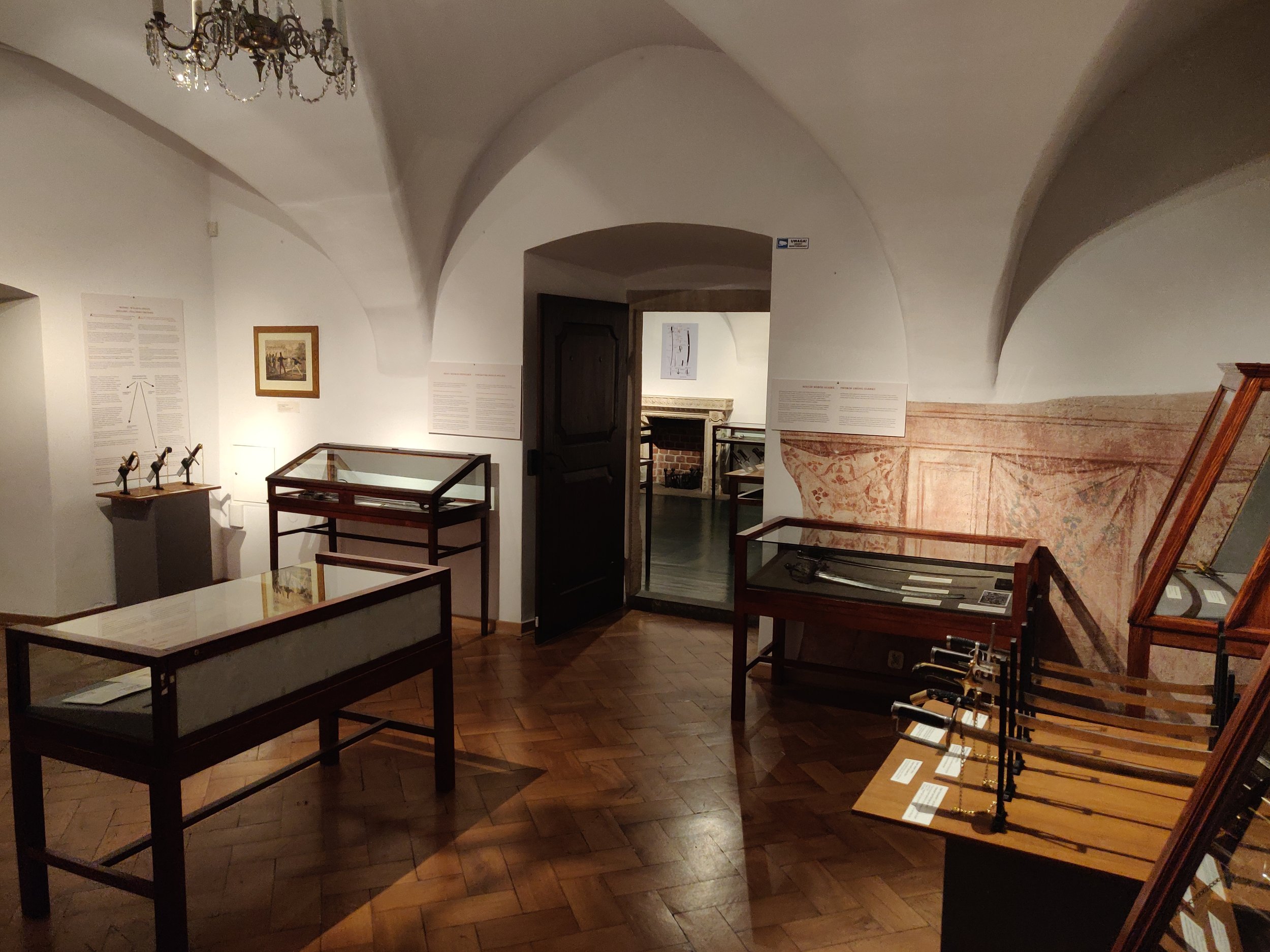
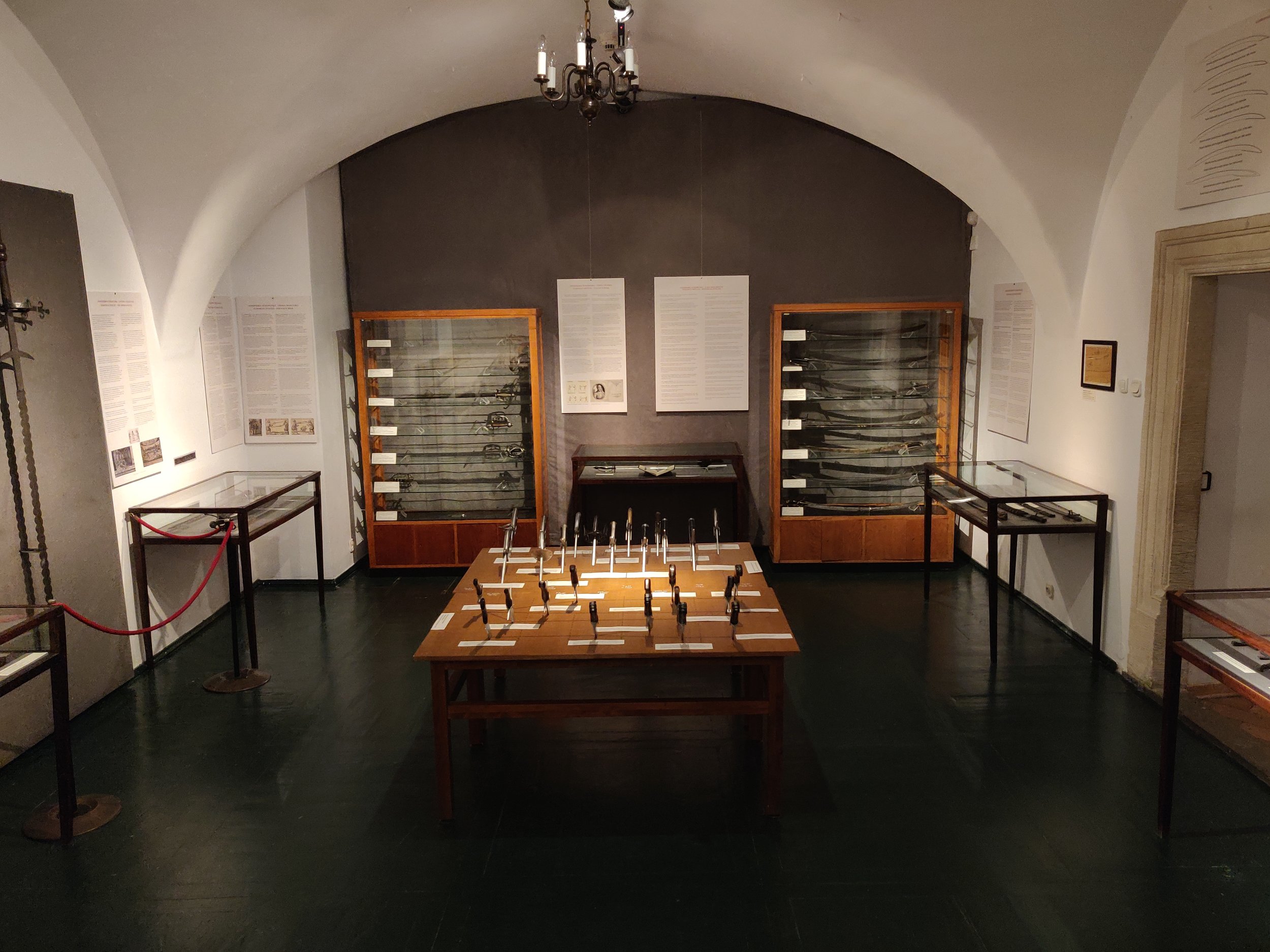



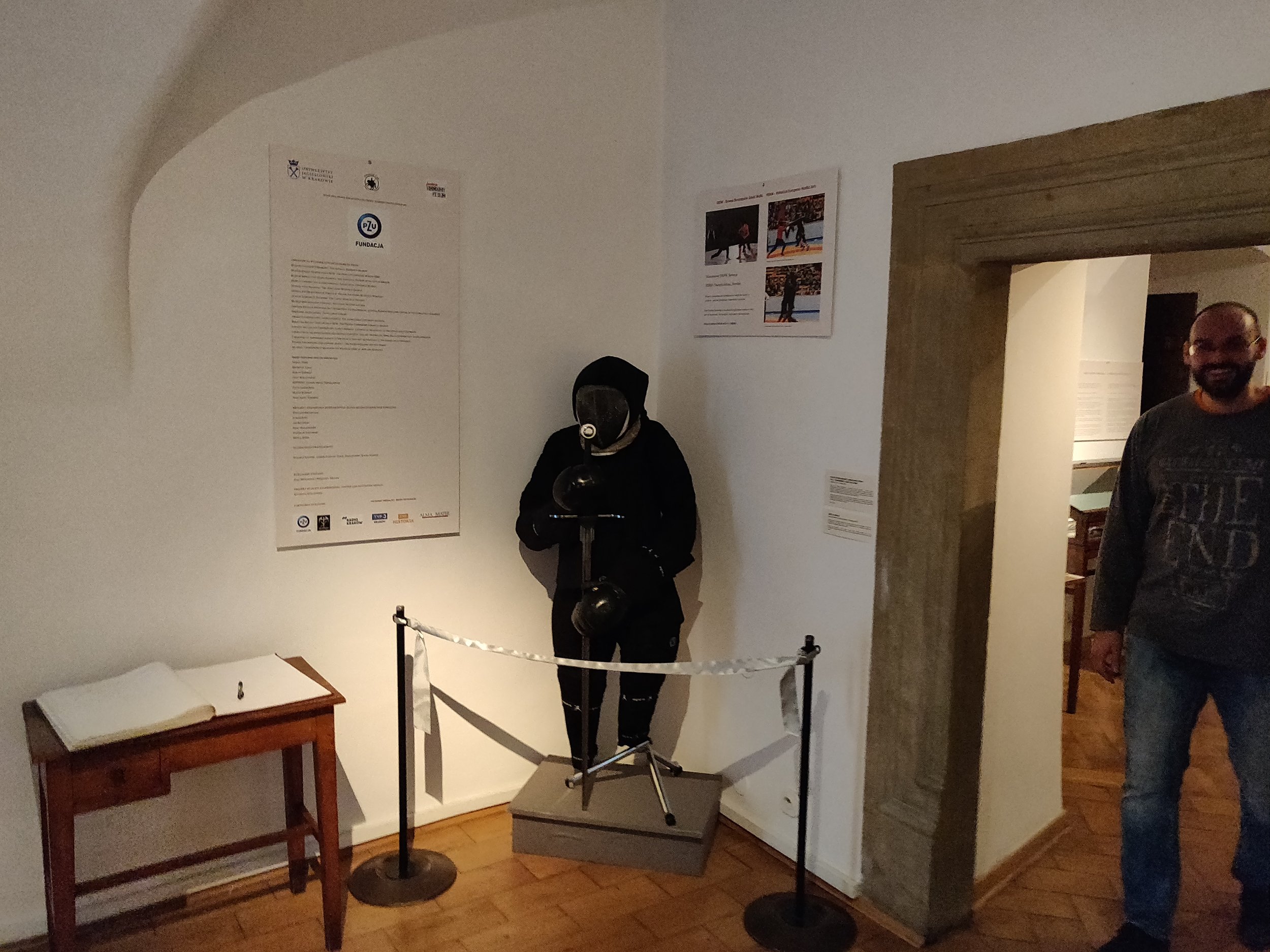
The sword as a symbol
The first room looks into the sword as an element of status and symbol. Sabres worn by academics at the university (with the regulations of Jagiellonian university and a portrait painting), but also sword used for ceremonies, including polish coronation swords. The displays include some original early modern woodcuts, from the museum’s impressive collection.
The swords’ type and related practice
The two main rooms of the exhibition focus on the swords’ (mainly sabres’) types and history. Tracing the multi-cultural history of the sabre is not an easy task, but the installations managed to guide the visitor through the main lines of origins and cultural encounters which formed the different types of sabres. Two large table displays at the centre of the room allow the visitors to handle the different type of hilts organised into a tree of evolution of forms. In the next room, three main types of sabres are available to handle in an ingenious installation allowing to grab and move the weapon itself. This interactive experience is put in perspective by a great number of panels with (too much?) exhibition texts, drawings, artwork and charts, and by original sabres, a large number of which are loans from the national museum, including rare and beautifully decorated examples.
Each room has screens displaying either interviews of the curators or HEMA practitioners, or demonstration of historical European martial arts in the beautiful surrounding of the old inner court of the university. An installation worth mentioning is composed of two table cases and panels, explaining the construction processes of the two main types of sabre and the Damascus steel. It includes metallographic zoom-ins, allowing to put the concepts into perspective, based on metallurgic studies on the original blades.
The sword and its books
The last room looks into fight books and the documentation of martial arts practices. The famous early fifteenth and early sixteenth century fight books kept in the Jagiellonian library are sadly not on display, but the facsimile of the “Gladiatoria” and pictures of the “Goliath” are there to evoke them. A few printed treatises, and original documents related to martial practices covers the interrelation between the written word, the drawn figure and the embodied knowledge of fighting.
Outro
The way out of the exhibition features HEMA equipment, practice swords and protective equipment, as well as objects and documents telling the story of sword fighting as a sport. It includes also foils and old fencing masks, next to the nylon swords for HEMA practice.
I’ve liked
The interactive displays
The connection between heritage and modern HEMA practices
The story of the sabre told by practitioners with the focus on the pragmatical use of objects
The very broad scope of the exhibition telling a story of martial arts through the ages
I’ve disliked
The size of exhibition texts and the echoing effect between them
The typos and mistakes left in the English version of the exhibition texts
A few bold statements about martial arts practices, without explanation (that’s the historian speaking)
The fact that neither the Goliath, nor the Gladiatoria were on display (and that’s the fight book affictionado of manuscripts and early prints speaking)
I would like to thank Jerzy and Malgorzata for inviting me to give a lecture about Swiss sabre fencing for the cultural program of the exhibition. I had the great opportunity and pivilege to have a tour of the exhibition and access to behind the scene stories. Go and visit this exhibition if you have the chance, you still have until end of November. I have been told that an exhibition catalogue is in the making. I’m looking forward to this.




